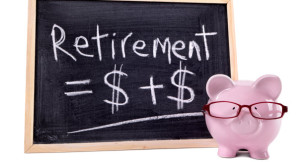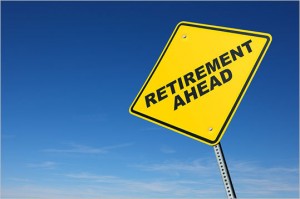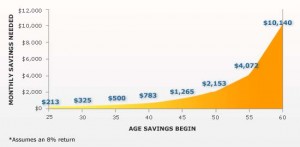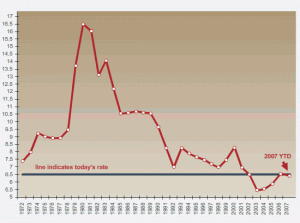 The following are the ten major things that every baby boomer and anyone who is planning to retire in the near future should look at. We will provide a few comments about each on, however obviously you will need to apply your own personal situation to this list. Also you may want to get the assistance of an expert financial planner to help with the details and calculations. Once you properly go through each of these steps you will have an idea of your situation when you retire. The next step then is to take action to improve each area and then reassess once action has been taken and every year there after.
The following are the ten major things that every baby boomer and anyone who is planning to retire in the near future should look at. We will provide a few comments about each on, however obviously you will need to apply your own personal situation to this list. Also you may want to get the assistance of an expert financial planner to help with the details and calculations. Once you properly go through each of these steps you will have an idea of your situation when you retire. The next step then is to take action to improve each area and then reassess once action has been taken and every year there after.
Retire Successfully – 10 Steps to Focus On
Prepare a pre-retirement budget – what income will you have and what will your day-to-day expenses be? You may need to take steps to re-balance your expenses to ensure that your cash flow is sufficient to meet your needs.
What tax bracket will you be in – knowing this number will help with your budget. How much tax will you be obligated to pay and what action can you take to lower your tax obligation?
Plan a mix of growth and income investments – a financial planner can help with ensuring that there is the right mix of income investments, growth investments and what changes you need to make?
Figure out your real estate situation – is your mortgage paid off, should you downsize, what improvements do you need to make to sell your home or make it comfortable for you during retirement. These decisions will have a large impact on your budget.
Refinance your home before you retire – if you need to refinance your home, do it while you are still working. The finance companies will re-evaluate your income etc and risk profile once you retire.
Verify your car situation before retiring
Do you need to update your car, pay it off, downsize from two to one car or complete major repairs before you retire?
Audit your health insurance now and after – what health insurance will you have once you retire a
 The following are the ten major things that every baby boomer and anyone who is planning to retire in the near future should look at. We will provide a few comments about each on, however obviously you will need to apply your own personal situation to this list. Also you may want to get the assistance of an expert financial planner to help with the details and calculations. Once you properly go through each of these steps you will have an idea of your situation when you retire. The next step then is to take action to improve each area. Then reassess once action has been taken and every year there after.
The following are the ten major things that every baby boomer and anyone who is planning to retire in the near future should look at. We will provide a few comments about each on, however obviously you will need to apply your own personal situation to this list. Also you may want to get the assistance of an expert financial planner to help with the details and calculations. Once you properly go through each of these steps you will have an idea of your situation when you retire. The next step then is to take action to improve each area. Then reassess once action has been taken and every year there after.
Retire Successfully – 10 Steps to Focus On
Prepare a pre-retirement budget – what income will you have and what will your day-to-day expenses be? You may need to take steps to re-balance your expenses to ensure that your cash flow is sufficient to meet your needs.
What tax bracket will you be in – knowing this number will help with your budget. How much tax will you be obligated to pay and what action can you take to lower your tax obligation?
Plan a mix of growth and income investments – a financial planner can help with ensuring that there is the right mix of income investments, growth investments. they can help decide what changes you need to make?
Figure out your real estate situation – is your mortgage paid off? Should you downsize? What improvements do you need to make to sell your home or make it comfortable for you during retirement? These decisions will have a large impact on your budget.
Refinance your home before you retire – if you need to refinance your home, do it while you are still working. The finance companies will re-evaluate your income etc and risk profile once you retire.
Verify your car situation before retiring and Retire Successfully
Do you need to update your car, pay it off, downsize from two to one car? Or complete major repairs before you retire?
Audit your health insurance now and after – what health insurance will you have once you retire and w
nd what changes do you need to make?
Give yourself a health assessment – while still working, have a complete health checkup. Take action to improve your health, whether it is more exercise, diet etc.
Update your living will and your regular will – talk to your lawyer and make sure that these two documents reflect your current requirements.
Develop a game plan – summarize all of your actions that are needed, prioritize them and take steps to complete them. Re-evaluate once a year or after any major changes in your life style. Finally once you do retire, adhere to your budget and re-evaluate everything annually!
 Sometimes you do not get a choice in whether you retire or not. Your company may lay you off or offer incentives that cause you to retire earlier than planned. Whatever the reason, it is never too late to start thinking about the essentials to the best retirement plan you can have. Planning now before you retire or are forced out will ensure that your retirement years are much better than they might have been otherwise. Defining your own schedule will provide you with independence and freedom to make your own decisions on your terms.
Sometimes you do not get a choice in whether you retire or not. Your company may lay you off or offer incentives that cause you to retire earlier than planned. Whatever the reason, it is never too late to start thinking about the essentials to the best retirement plan you can have. Planning now before you retire or are forced out will ensure that your retirement years are much better than they might have been otherwise. Defining your own schedule will provide you with independence and freedom to make your own decisions on your terms.



